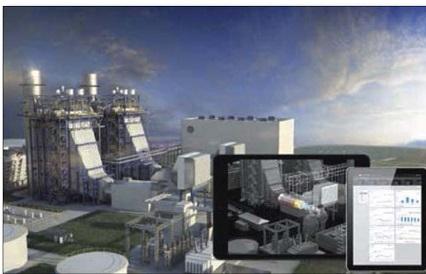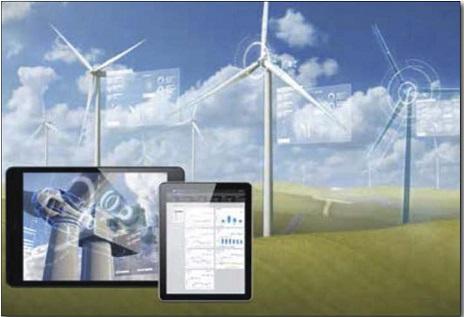The power of the Industrial Internet
In September, GE hosted its fourth annual Minds + Machines event in San Francisco, California.

More than 1,000 industry leaders, GE partners, software developers and users attended a three-day event focused on the Internet of Things (IoT) and how it can be used in power generation, manufacturing, aviation, healthcare and transportation.
The focus at the event was GE’s Predix software platform for the Industrial Internet introduced earlier this year. This cloudbased platform is claimed to enable industrial-scale analytics for asset performance management by providing a standard way to connect machines, data and people. When a power plant is fully connected with sensors, Predix is said to model its present and future state to increase efficiency across the entire system. GE calls this the Digital Power Plan (Figure 1).
The company claims that benefits can amount to $230 million over the lifespan of a new combined-cycle power plant (CCPP) and $50 million when applied to an existing CCPP. GE attributes these savings to lower fuel costs, increased performance, less unplanned downtime and lower emissions.
The basic concept is that all equipment, systems and auxiliaries in a power plant can be connected to Predix. It acts as the operating system for all control systems, condition monitoring, maintenance systems and industrial software applications.
Alerts are created when a turbine is producing less than optimal power, for example. Similarly, anomalies are reported to the relevant employee; maintenance schedules are based on current conditions; and the plant is operated more efficiently. Technicians and engineers will continue to operate gas and steam turbines with the added benefit of far more sensor information that is fed into an analytics engine to provide detailed insight on plant operations. “A typical gas power plant has more than 10,000 sensors,” said Ganesh Bell, Chief Digital Officer at GE Power & Water. “Only about two percent of that data gets analyzed today.”
All data transmitted to the analytics engine can be used in various kinds of modeling as well as simulation of a variety of what-if scenarios. Operators can better evaluate the risk of running components beyond their maintenance interval and discover how to eke out more efficiency from gas turbines, for example.
Digital twin
In particular, GE has put together what it calls the “Digital Twin.” This is an exact replica of a power plant including a digital replica of the gas turbines that make use of what Bell terms “digital technology and physics-based methods” to represent the actual assets in a plant.

The Digital Twin simplifies the gathering of data as a means of increasing performance and improving results gained through predictive maintenance. It can also be used to predict future performance or to investigate past failures.
(The digital wind farm already exists)
Alternately, the Digital Twin can be used to determine how the plant would respond to a variety of simulated plant conditions. Being able to model temperature extremes would help increase the accuracy of the CCPP output.
And with wind and solar resources now being introduced onto the grid with greater frequency, the Digital Twin can be used to model plant operation in response to sudden stops and starts related to renewable resources going on or offline. This would enable plant executives to decide whether the gains from rapid cycling balance out the heavy toll exerted by the resulting wear and tear on turbomachinery and Heat Recovery Steam Generator (HRSG) components.
Read more in the November-December 2015 issue of Turbomachinery International
Fuel Flexibility in Heavy-Duty Gas Turbines: A Key Driver for Energy Transition
March 13th 2025From Hydrogen to HVO, Mr. Federico Bonzani, Chief Technology Officer of Ansaldo Energia, describes the fuel flexibility state-of-the-art solutions of the Company to meet the actual and future needs of power generation industry.